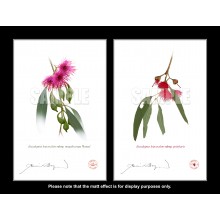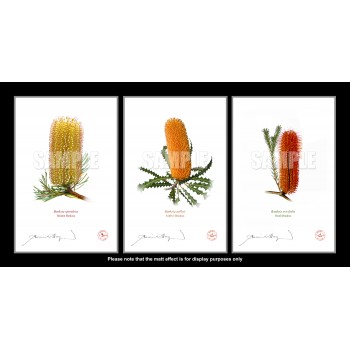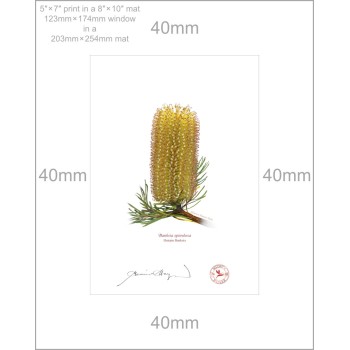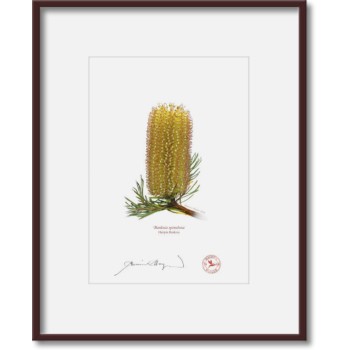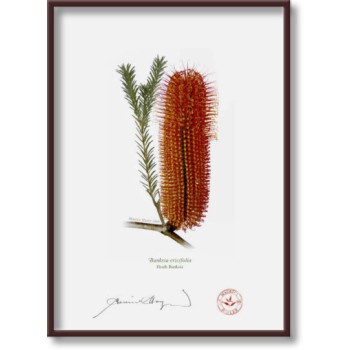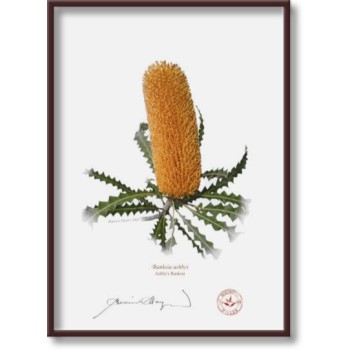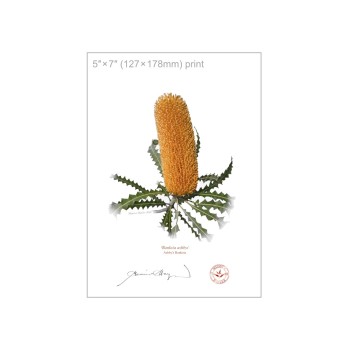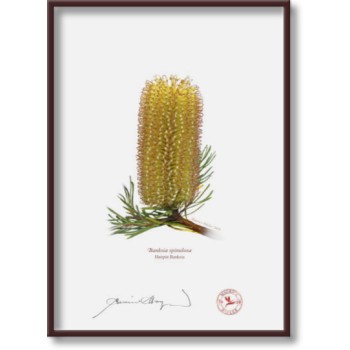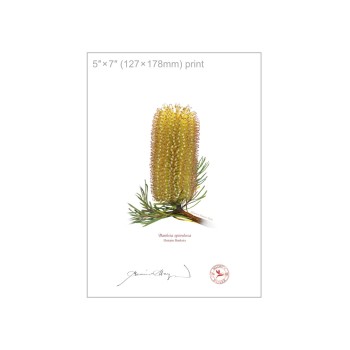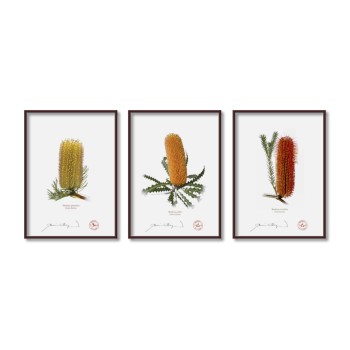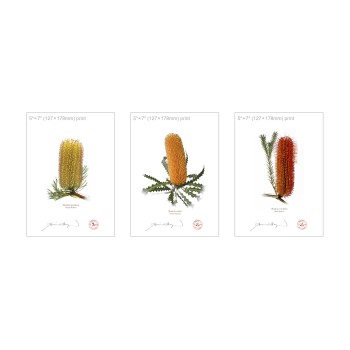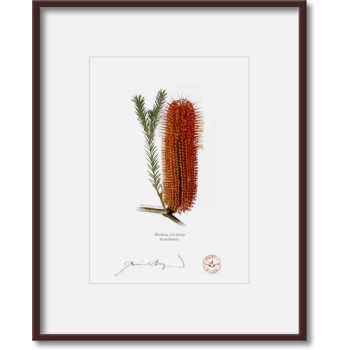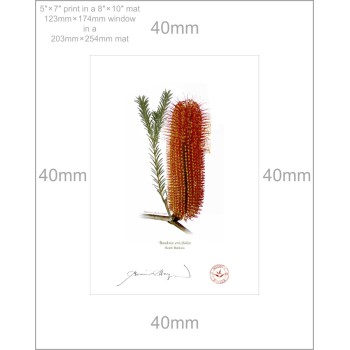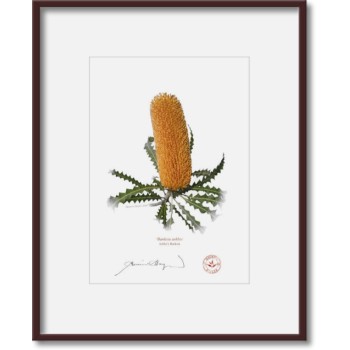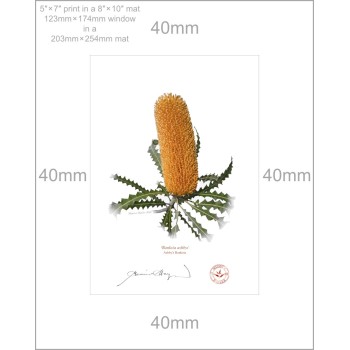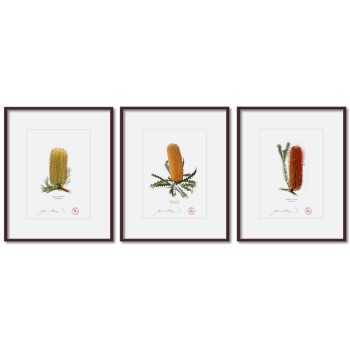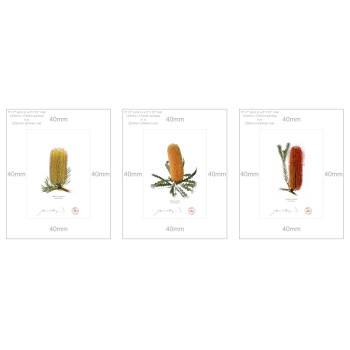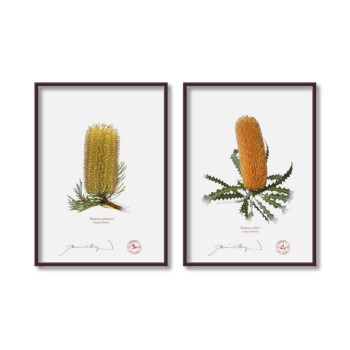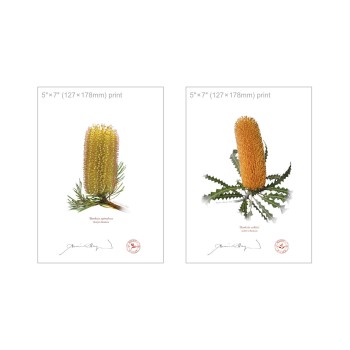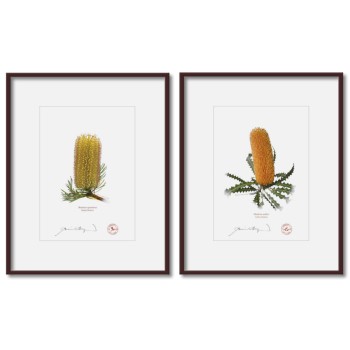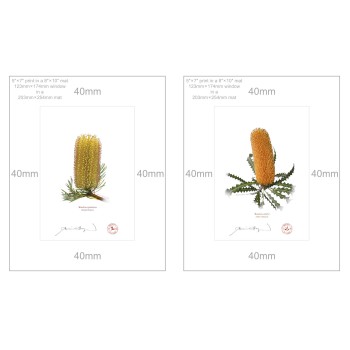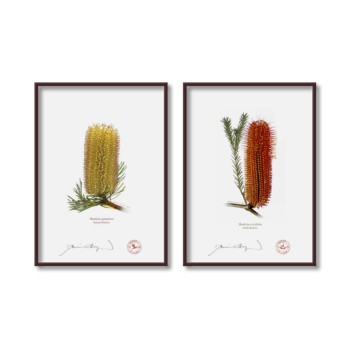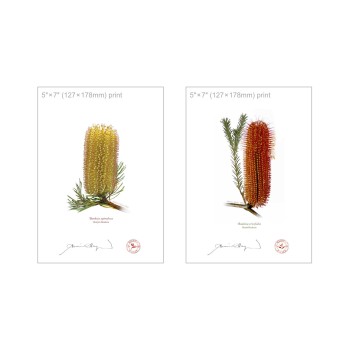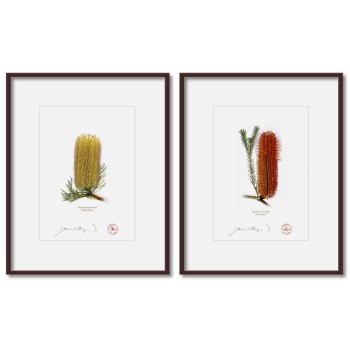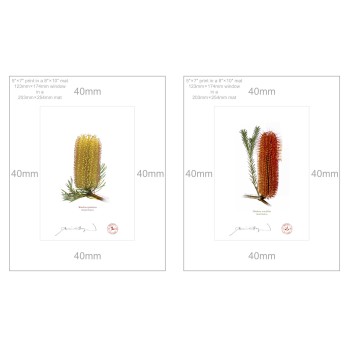Australian Botanical prints by artist Maurice Hayler, designed to endure.
Each print carries the artist’s signature and is stamp-embossed for authentication.
Our art is printed with care on Hahnemühle fine art archival paper with archival Epson UltraChrome pigment inks, good for at least 75 years. View all print and mat sizes here.
Please Note: that all orders typically leave within one to two business days.
We can (and do) process urgent and express orders on request.
223 Hairpin Banksia (Banksia spinulosa) - 5″ × 7″ Print Ready to Frame With 8″ × 10″ Mat and Backing
Genus: Banskia
Species: spinulosa
Meaning of name:
Banksia, after Sir Joseph Banks (1743–1820), an English naturalist and botanist who accompanied (then) Lieutenant James Cook on the Endeavour in 1768–1771, and who did much to bring Australian botany to the European world
spinulosa is from Latin: spinula, spine, thorn. Possibly a reference to the leaf tips
Banksia spinulosa was first collected sometime between 1788 and 1793 by John White, who was Surgeon General to the New South Wales British colony at the time. He called it the ‘Prickly-leaved Banksia’ but it is now known as the Hairpin Banksia.
B. spinulosa’s natural range extends along the eastern coast of Australia from Victoria, through NSW and right up to Cairns in northern Queensland, and westwards from the coastline into the forests of the Great Dividing Range. The flower spikes are from 10 to 20cm in length (4 to 8 inches) and the shrub reaches from 1m to 3m in height (3 to 10 feet).
This print features in the Banksia Flower Collection 1 triptych collection, the Banksia Flower Collection 2 diptych collection, and the Banksia Flower Collection 3 diptych collection.
Product Code: 223_Banksia_spinulosa_mat_small
Availability: In Stock
Availability: In Stock
$47.00
Ex Tax: $42.73
Ex Tax: $42.73
Botanical Information:
Family: ProteaceaeGenus: Banskia
Species: spinulosa
Meaning of name:
Banksia, after Sir Joseph Banks (1743–1820), an English naturalist and botanist who accompanied (then) Lieutenant James Cook on the Endeavour in 1768–1771, and who did much to bring Australian botany to the European world
spinulosa is from Latin: spinula, spine, thorn. Possibly a reference to the leaf tips
Banksia spinulosa was first collected sometime between 1788 and 1793 by John White, who was Surgeon General to the New South Wales British colony at the time. He called it the ‘Prickly-leaved Banksia’ but it is now known as the Hairpin Banksia.
B. spinulosa’s natural range extends along the eastern coast of Australia from Victoria, through NSW and right up to Cairns in northern Queensland, and westwards from the coastline into the forests of the Great Dividing Range. The flower spikes are from 10 to 20cm in length (4 to 8 inches) and the shrub reaches from 1m to 3m in height (3 to 10 feet).
This print features in the Banksia Flower Collection 1 triptych collection, the Banksia Flower Collection 2 diptych collection, and the Banksia Flower Collection 3 diptych collection.
